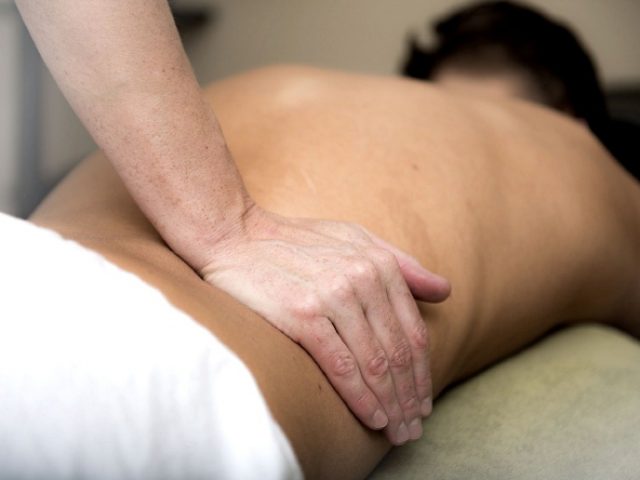
Pain is a universal human experience, and it can manifest in various forms and intensities. Whether it’s acute pain resulting from an injury or chronic pain associated with conditions like arthritis or fibromyalgia, finding effective methods for pain relief is a top priority for many individuals. While medications and physical therapy are commonly used treatments, an emerging approach to pain management focuses on the mind-body connection. In this blog post, we’ll delve into the world of mind-body approaches, particularly meditation and yoga, and how they can be powerful tools for alleviating pain.
The Mind-Body Connection
The mind-body connection is the intricate relationship between our mental and emotional states and our physical health. Emerging research suggests that our thoughts, emotions, and stress levels can influence the perception of pain and even its intensity. Harnessing the power of this connection can be a valuable component of comprehensive pain management strategies.
Meditation for Pain Relief
Meditation is a centuries-old practice that involves training the mind to focus on the present moment, increase awareness, and promote relaxation. It has gained significant attention in recent years for its potential to reduce pain perception and improve overall well-being. Here’s how meditation can contribute to pain relief:
1. Reducing Stress:
Chronic stress can exacerbate pain and make it more challenging to manage. Meditation techniques, such as mindfulness meditation, promote relaxation and help reduce the body’s stress response, which can, in turn, alleviate pain.
2. Changing Pain Perception:
Meditation can alter the brain’s response to pain. Studies have shown that regular meditation can increase the brain’s gray matter density in areas associated with pain processing, leading to decreased pain perception.
3. Enhancing Pain Tolerance:
Through meditation, individuals can increase their pain tolerance. Techniques like loving-kindness meditation encourage a compassionate mindset, which can make pain more bearable.
4. Improved Sleep:
Chronic pain often leads to sleep disturbances, which can worsen the perception of pain. Meditation practices can enhance sleep quality and help individuals get the rest they need for healing.
5. Mindful Coping:
Meditation equips individuals with the tools to mindfully cope with pain. Instead of resisting or fearing pain, they can learn to accept it and manage it more effectively.

Yoga for Pain Relief
Yoga is a mind-body practice that combines physical postures, controlled breathing, and meditation. It has gained recognition as a complementary therapy for pain management due to its ability to improve flexibility, strength, and overall well-being. Here’s how yoga contributes to pain relief:
1. Increased Flexibility and Strength:
Many individuals with chronic pain experience muscle stiffness and weakness. Yoga postures, or asanas, can help increase flexibility and strength, reducing discomfort associated with these issues.
2. Enhanced Body Awareness:
Yoga promotes body awareness, enabling individuals to identify areas of tension or discomfort. This heightened awareness allows them to address and alleviate pain more effectively.
3. Relaxation and Stress Reduction:
Yoga incorporates relaxation techniques and controlled breathing exercises that can reduce stress and anxiety, which often contribute to pain perception.
4. Improved Posture:
Poor posture can lead to musculoskeletal pain. Yoga encourages proper alignment and posture, which can prevent or alleviate pain associated with postural issues.
5. Pain Coping Strategies:
Yoga teaches individuals to develop a better relationship with pain. By focusing on breath and mindfulness during challenging postures, they can learn to tolerate discomfort and pain more effectively.
Choosing the Right Mind-Body Practice
Both meditation and yoga offer unique benefits for pain relief, but the choice between them depends on individual preferences and needs:
- Meditation is an excellent option for those who prefer a seated practice that focuses on mental relaxation and awareness. It can be practiced virtually anywhere, making it accessible to individuals with limited mobility.
- Yoga, with its emphasis on physical postures, may be more appealing to those seeking a combination of physical activity, relaxation, and mindfulness. Various styles of yoga cater to different fitness levels and goals.
Getting Started with Meditation and Yoga
If you’re interested in exploring meditation and yoga as tools for pain relief, here are some tips to help you get started:
- Find a Qualified Instructor: Consider taking classes or sessions led by experienced instructors who can guide you through proper techniques and alignment.
- Start Slowly: Both meditation and yoga are practices that require time and patience to master. Begin with short sessions and gradually increase duration and intensity.
- Listen to Your Body: Pay attention to how your body responds during practice. If you experience pain or discomfort beyond what is expected, modify or skip poses accordingly.
- Consistency is Key: Regular practice yields the best results. Aim to incorporate meditation or yoga into your daily routine for maximum benefits.
- Seek Medical Advice: If you have a medical condition or are experiencing severe pain, consult with a healthcare professional before starting a new mind-body practice.
Conclusion
Meditation and yoga offer holistic approaches to pain relief by addressing the mind-body connection when you sneak a peek at this site. These practices can help reduce stress, improve pain perception, and enhance overall well-being. While they may not replace conventional pain management techniques, they can be valuable additions to your pain relief toolkit. Whether you choose meditation, yoga, or a combination of both, the journey to pain relief begins with exploring the profound connection between your mind and body.

